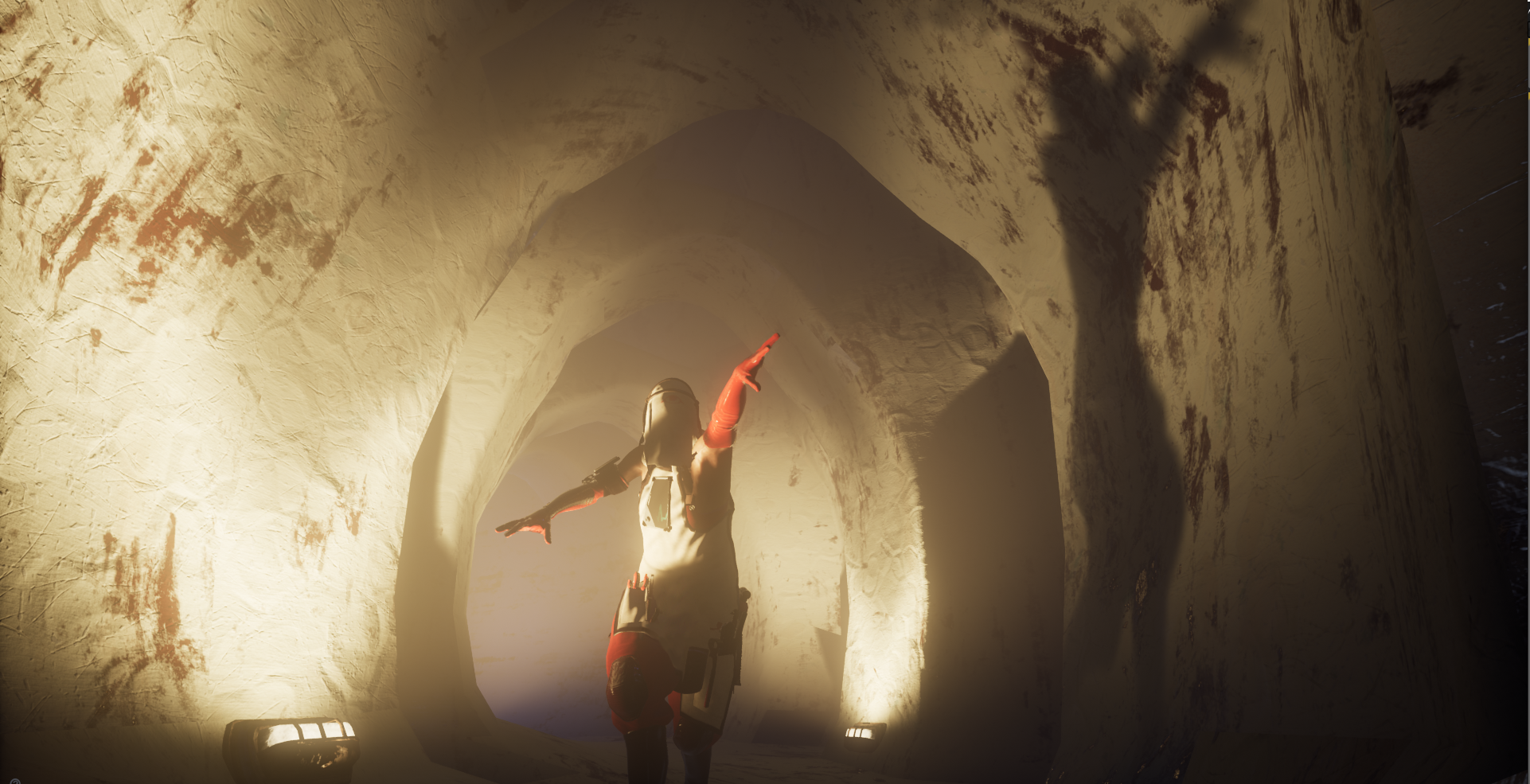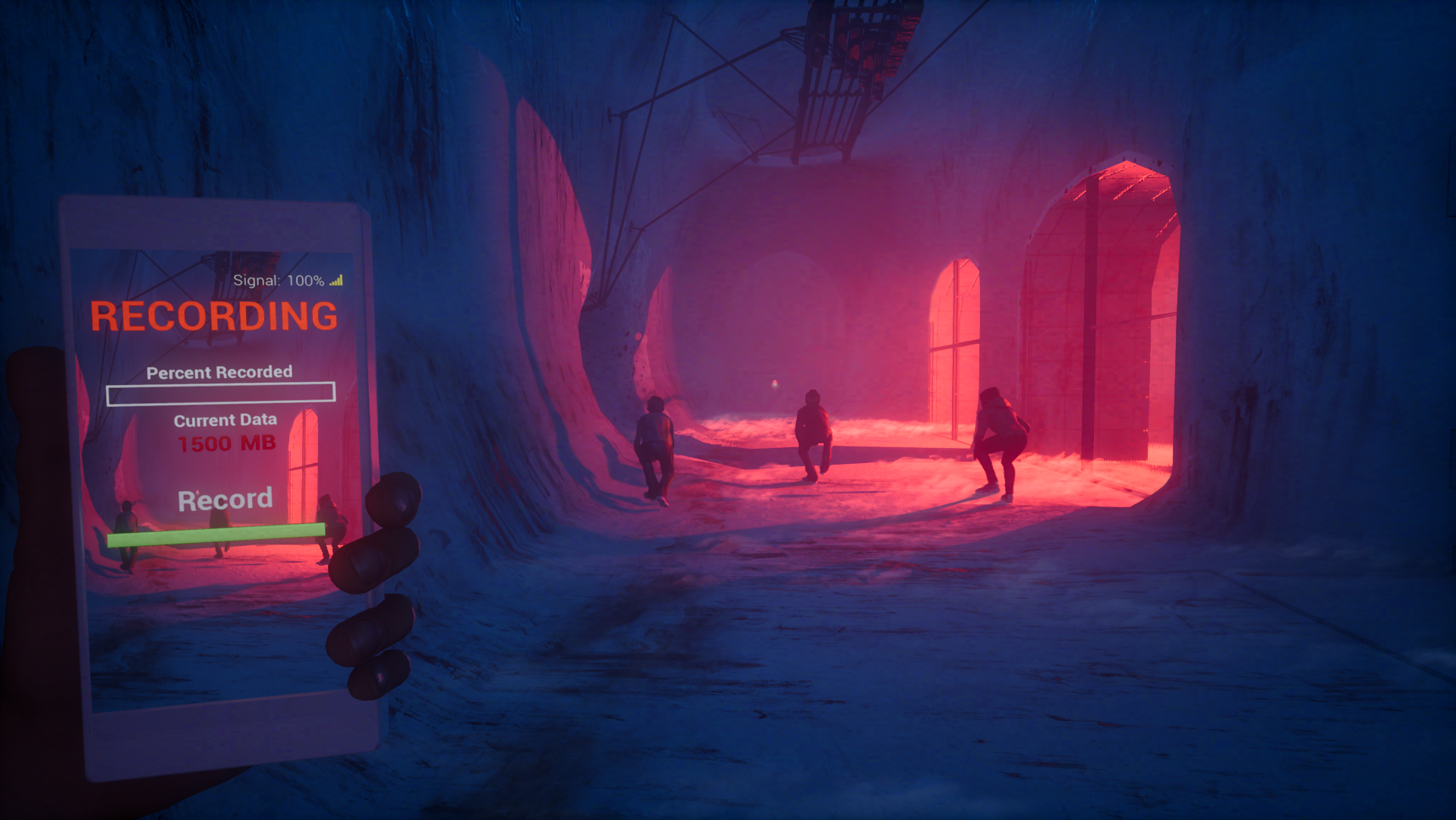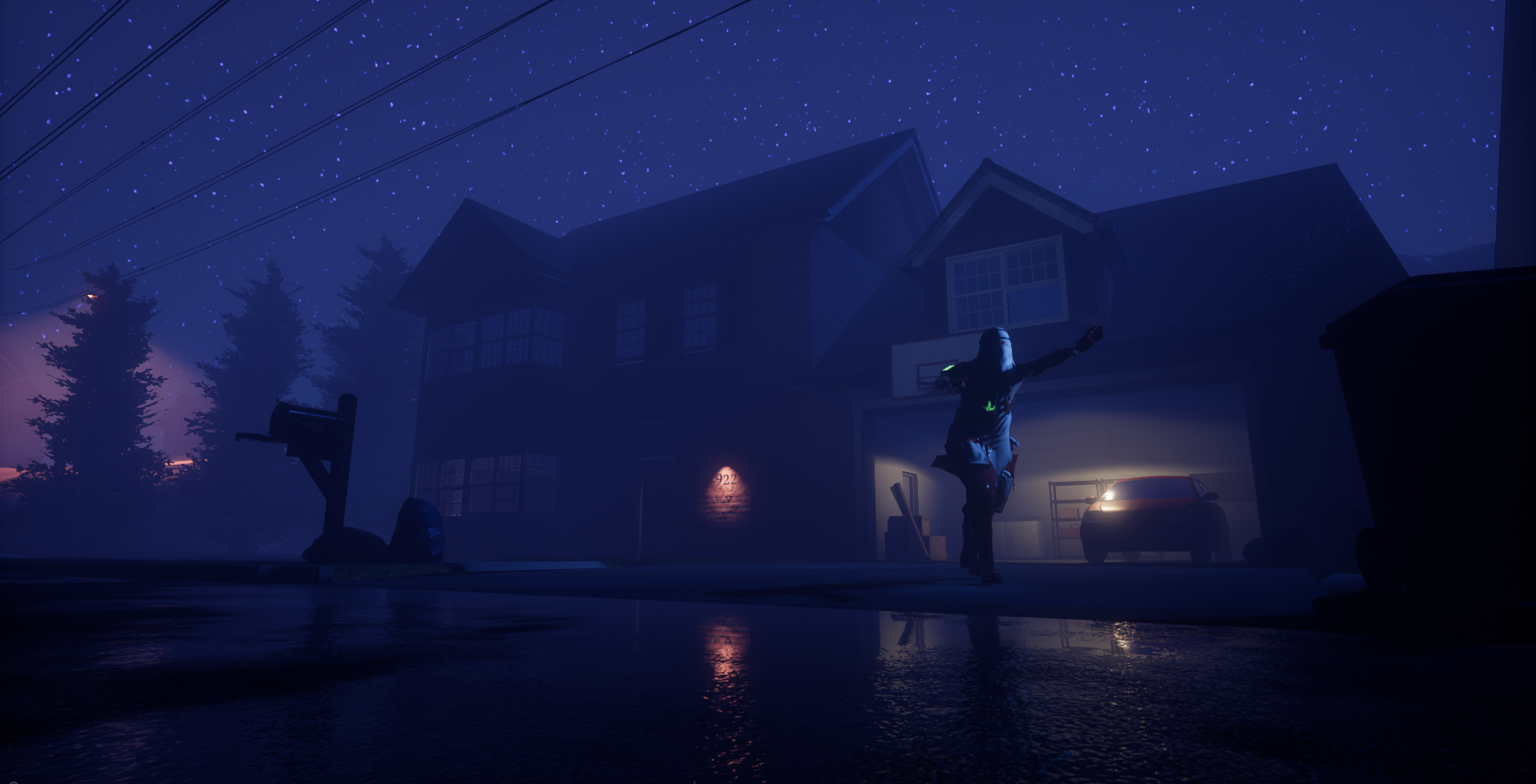The Blackout Club is a Stranger Things-like co-op horror game from ex-BioShock devs
A game that creates horror movie-worthy moments.
In The Blackout Club, some teenagers have been waking up in different parts of their hometown, covered in dirt or with blood under their fingernails, and no memory of what led them there. Something nasty lurks beneath the surface of this place and the adults don't want to know. One of the teenagers' friends has gone missing. In trying to figure out what's going on, they'll band together and uncover a vast network of tunnels under their hometown, and a sinister conspiracy involving the adults they interact with every day—but they don't even know they're a part of it.
In this co-op horror game for up to four players, you've got to document what's going on in this idyllic suburban town, but the objectives are procedurally generated, thrusting your characters into new and tricky situations every night. It's partly a stealth game, but it'll also encourage you to create diversions and combine different abilities to survive. While a singleplayer section will kick off the game and establish the premise, the rest will be focused on co-op play that scales in challenge depending on the number of people playing. The intention is to let players share their own unique horror stories, as a result of the game's systems.

The title 'The Blackout Club' refers to two things: it's the name of the group formed by these teenagers, but it also tells the story of the American town where these kids live—one that has no wi-fi or cellular signal, and is basically cut off from the rest of the world. Proving this conspiracy is real, then, won't be as straightforward as streaming it via Periscope. "Why do they have these blackouts?" says Jordan Thomas, co-founder of developer Question. "And indeed, why does a lot of the town seem to have them? They get together, in the woods, and talk about how best to capture the monstrous activities that are happening in their town during the night on camera, and how to then get that footage out of town."
These are described by the developer as surveillance missions. I ask Thomas how the game is structured—he cautions that some of the specifics are still being nailed down. "You see the kids standing around inside their little hideout, and you have a map of the town. All you get to choose is where you spawn in—what part of town. And as your character levels up, you gain access to new start points, more difficult challenges and narrative assets that are closer and closer to the heart of the conspiracy. It's not really a thing that ends. It's more Lovecraftian, where you're struggling endlessly against the unknown, but it gets juicier, I guess, as you go further into the neighbourhood and deeper into the underground maze."
Thomas describes what a typical objective will look like, and how that's presented in game. "The Blackout Club contacts you using a series of emojis that is essentially a code to prevent detection by the adults in town, and you can translate those into text. It says something like, 'capture footage of a lucid dragging someone towards the red door', so a particular enemy type and a particular mechanic. One of the players has to allow themselves to be grabbed, so the other player can get that footage on film. Narratively, that can then become proof to the world that these terrible things are going on."
Lucids are an enemy type, along with sleepwalkers. Sleepwalkers are people the teenagers know in everyday life, like teachers, parents and family friends, who are unknowingly being used. They're blind, but they can hear really well, and they'll stretch their arms out pretty far to grab anything passing by them. Thomas characterises them as 'antibodies'. Lucids, meanwhile, are much rarer, but they can see, hear and operate a strong light. These are the people who are in on the conspiracy. Thomas doesn't elaborate more, wanting to preserve the surprises of the story.


The developer's credentials convince me that they can create a platform for exciting horror moments. Question is composed of developers who have worked on all three BioShock games, Dishonored, 2017's Prey, a Thief game and a Deus Ex, among other projects (its first game was offbeat game-about-games The Magic Circle).
In terms of The Blackout Club's lineage with those games, Thomas says it breaks down the conceptual 'gun hand and magic hand' that encapsulate the range of abilities in immersive sims. These are instead distributed across four vulnerable characters, rather than being in the hands of a single superhuman. Combined, you should be able to plan, survive and progress as you each play to your strengths.
If you manage to capture footage of a lucid dragging a friend towards a red door, though, the mission doesn't end there. "That's just the first objective," Thomas explains. "After completing that, another one is sent to you, and the hope is it feels a little bit like a flash mob, where they're constantly trying to stay ahead of the enemy, and you're only told what you need to know at the time. Those are deeply randomised. They could take you across town, they could take you deep into the maze, and the challenges along the way differ each time." You're capturing what Thomas calls the 'grotesque behaviour' of the game's enemies on camera, and the more rare or complicated the behaviour is, the more experience points you'll get for capturing it.
Keep up to date with the most important stories and the best deals, as picked by the PC Gamer team.
Lucids and sleepwalkers aren't the only things waiting out there in this town and the tunnels below. Thomas also alludes to a boogeyman, the location of which can only be revealed by getting any of the player characters in your party to shut their eyes and 'black out'. "By blacking out like that, you can see this thing that is hunting you, and it goes for the kid that has committed the most crimes from the perspective of our villains, who will remain mysterious for now. That is where we draw inspiration from Stranger Things, to an extent, but also, and especially, It Follows, where there's this singleminded, relentless force coming after you."
This can lead to moments where one player will close their eyes and see the monster sneaking up on another player, which creates a lot of potential for player-generated scares. The way Thomas describes this 'force in the dark' reminds me of the alien in Alien Isolation, only it's judging your behaviour. "All other information in the world gets drained away, and often it's right next to you. And none of the kids know what it is. They are terrified of it, and the more attention that you personally draw while playing the game, the more likely it is to come for you."
Risk and reward

The screenshot above shows a character crouching on a rooftop with a crossbow—incapacitating an enemy with it will be considered a 'crime' in the eyes of your adversaries. "You can never kill with the tools in this game, but if you neutralise an enemy, it will come at great cost. It will be possibly the only one you're able to afford during the entire mission that night. While we come from a very stealth-friendly background and we are committed to a really rich and, I guess, granular set of stealth mechanics where you can really tell how well you're doing and you can recover from failure, we are also excited by the fact that teens are not necessarily subtle."
Expect fairly elaborate progression for your characters, unlocking new abilities and improving your existing ones. "Some of the powers that you're allowed to slot into your character afford you a very direct path. Sprinting and knocking people down, and kicking in doors is one of our mechanics if you're willing to be loud. The direct path, while we're committed to making it mechanically satisfying, also tends to generate a much greater crime signature and draw the attentions of this mysterious shape in the darkness much sooner."
The team is making The Blackout Club for co-op partly because horror is a social activity
"[The player characters] don't have bespoke classes, but they do have a major and a minor power," Thomas explains. You can slowly access more slots and more powers over the course of the game—major powers are the most expensive ones on your character sheet. "They tend to have a weighty effect on your style. An example is, there is a power that allows you to sprint infinitely, called 'unstoppable'. If you invest in that, you are very, very difficult to pin down. You're not subtle, and the likelihood is you're gonna draw the boogeyman towards you, but if you keep moving, that's not necessarily a fatal choice."
Generating horror stories

You'll eventually have a pretty large selection of abilities to choose from, but you can only select a few of them per night. "We believe that this leads to more meaningful anecdotes where players allow their powers to combine, and they don't feel locked in, because between missions they can always swap those out." The Blackout Club should have all the systems to create memorable horror stories on the fly: an invisible boogeyman, customisable abilities and unpredictable objectives that'll constantly put your group in risky situations. That combination is exciting to me. And one particular in-game story Thomas recalls really makes me believe in this idea that players can manufacture their own scares.
"Michael 'Patches' Kelly, our producer/designer, is the last one alive trying to get close to those of us who had been defeated," Thomas says, recalling one test playthrough of the game. "He squeezes his eyes shut and sees the boogeyman figure at the far end of the hallway. And he's like, 'of course'. He thinks it's just on patrol, but it's actually already coming for him. He turns around. He starts creeping slowly up in the standard issue horror crouch, and he turns off his flashlight. He rounds the corner and he squeezes his eyes shut again —and the thing is right on him. He opens his eyes, he pulls out this syringe tool, and starts stabbing space in front of him like Shelley Duvall [in The Shining], shrieking the entire time, and then of course it kills him. We lost it laughing. Nobody directed that sequence, but I couldn't have done it better myself."
The team is making The Blackout Club for co-op partly because horror is a social activity—watching scary films or playing scary games with other people usually enhances the experience. "But there's also the business reality," Thomas explains. "The truth is, the generative experiences that come out of some version of multiplayer are a way to increase the longevity of a thing, which with a small team, might otherwise vanish without a splash in the Steam market as it stands." It doesn't hurt that the look of the game's neighbourhood recalls those snapshots of smalltown America you might see in an '80s Spielberg movie. Indeed, Thomas says that a lot of people who have tried the game mention Stranger Things as a point of comparison.
"Everyone who is even remotely of pop culture has one of these teens vs adult conspiracy and/or magical realism stories in their heads, whether you were raised with The Goonies, or Stranger Things, or whether you're an arch nerd like me and love It Follows," Thomas says.
"Everyone's got their favourite. Heart of hearts, we'd love this game to have broad enough appeal that any of those people could give it a whirl and find a play style that suits their skillset and biases. We have tested the game against people who don't know what 'immersive sim' means fairly extensively, because we feel like it keeps us honest."
The Blackout Club is due out in the first quarter of next year.



